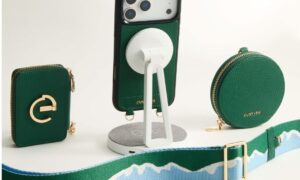With each passing day, technology has become increasingly indispensable in the world of education. It also favorably changes both the teaching and learning experience.
For instance, technology in the classroom helps children feel more motivated about studies because of the fun elements and improves the rate of learning. Teachers can also personalize the curriculum according to students’ needs with technology.
So, if you want to build a modern school or elevate an existing one and provide finer education, here are the most important tech to consider!
- Smart Board
A smart board is an interactive projector screen of almost the size of a whiteboard. It functions with a projector and creates a high-end version of a computer screen.
Teachers can both write and draw on the screen using a digital pen, aka stylus. They can also control the screen using the software.
Usually, smart boards come with a built-in projector to improve the presentation. This technology is a great addition to all modern classrooms.
- Projector
A project, an optical device, is used to project images and videos on a dedicated screen or smooth white surface. If you invest in smart boards in your classrooms, this technology will complement it.
It helps students take down notes much more easily, as even backbenchers can see the projected content clearly.
While using a projector, teachers only need to create slides, images, or short films. So this ensures that they don’t have to write or draw and teach. They only need to prepare the necessary ahead of time and use the material in every class!
- Management Software
One of the finest technologies for improving the quality of education is school management software.
Reliable school management software comes with several benefits for all parties. For instance, the school can use it for progress reporting, database management, and scheduling. Teachers can send classroom attendance tallies to the front office instantly.
Parents and students can check all assignments and grades online through their individual secure login. They can stay on top of all grades and take necessary actions to improve scores.
Administrators can share announcements and grades with comments and annotations. They can also use it to evaluate staff members.
- E-Books
Publications that are available digitally are called e-books. These are accessible through digital devices like smartphones and tablets and e-reader devices that are built only for reading e-books.
This is a great alternative to physical books, as e-books are far cheaper. Children also won’t have to carry several books in their bag to school. This also reduces the accumulation of waste from buying books every year.
- Document Camera
Document cameras are again used to display textbooks and paper documents on a screen, projector, or smartboard. They are generally used in science class to show the experiments to all students without them needing to surround the teacher.
- Smart Table
A smart table is a touchscreen display that is placed on every student’s desk. This technology lets students write their respective classwork on their table itself. So they don’t have to carry extra exercise books for every class.
Besides that, each smart table is also connected to the teacher’s smart table. They can check every student’s work and make corrections instantly, reducing the need to check classwork books.
Thus, it enhances both the teachers’ and students’ experiences, and both sides learn to collaborate properly.
- Virtual Reality (VR) & Augmented Reality (AR)
VR and AR technology are amazing in helping children connect with respective subjects on a deeper level.
In VR technology, children wear headsets, and it is best to show them historical places, outer space, or science experiments in 3D. With AR, students overlay digital content with the real world. It’s perfect to understand geography and anatomy.
These are great for building an interactive and enjoyable learning environment.
- Assistive Technology Devices
Around 240 million children worldwide have some disability. If you want to make your school even more inclusive, invest in assistive technology devices, including:
- Screen Readers: It converts displayed texts to speech or braille.
- Speech-to-Text Software: It helps students write their thoughts, ideas, or notes.
- Text-to-Speech Software: This reads out texts from e-books, websites, or documents for visually impaired students.
- Electronic Magnifiers: This helps visually impaired children enlarge content to see and read better.
- Word-Prediction Software: It suggests words/phrases and reduces their effort to write.
Conclusion
With these technologies, you’ll help students succeed with a top-notch education in the increasingly digital world. So, embrace them immediately and start redefining fine education!

































